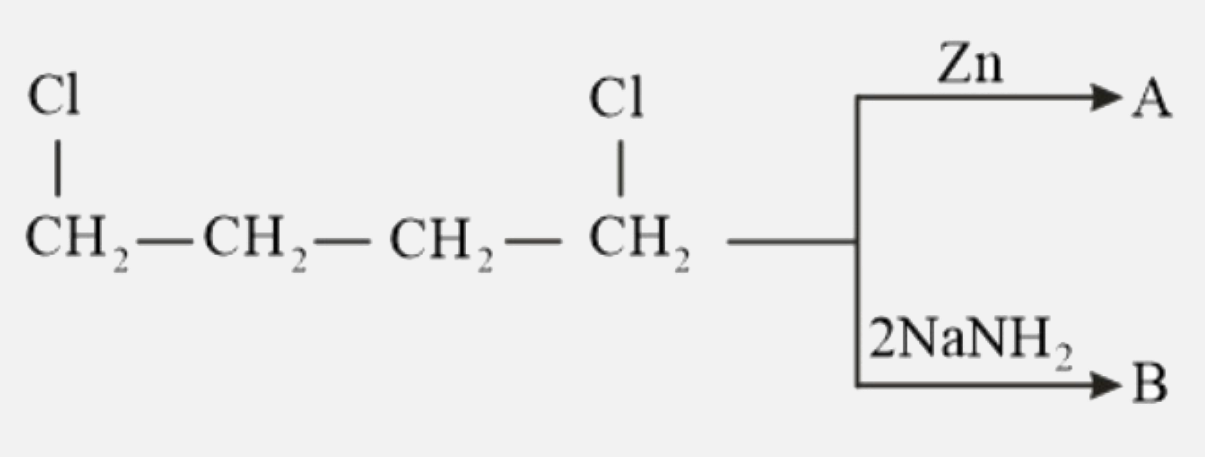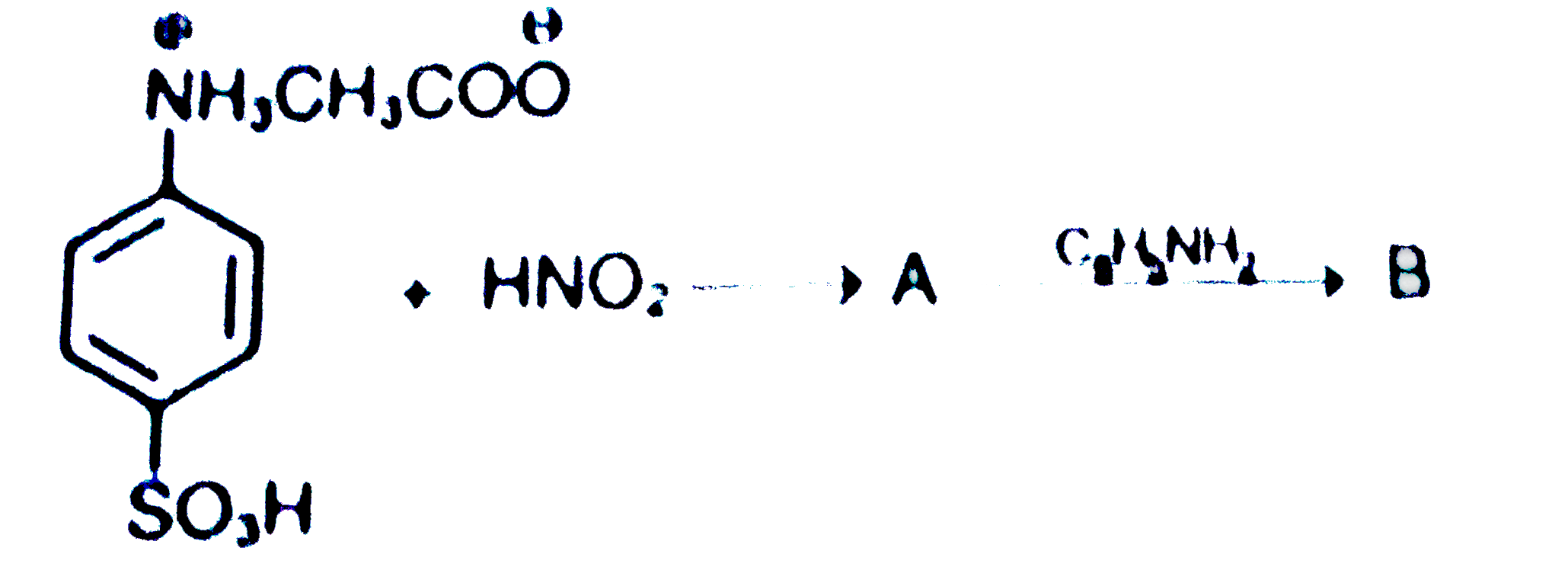On reaction with Cl2, phosphorus forms two types of halides 'A' and 'B'. Halide 'A' is yellowish-white powder but halide 'B' is colourless oily liquid. What would be the hydrolysis products of 'A' and 'B' respectively?
H3PO4,H3PO3
HOPO3,H2PO2
H3PO3,H3PO4
HPO3,H3PO3
The correct Answer is:A
A is PCl5 (yellowish white powder).
P4+10Cl2→4PCl5
B is PCl3 (colourless only liquid).
P4+6Cl2→4PCl3
The products of hydrolysis of PCl3andPCl5 are:
PCl3(B)+3H2O→H3PO3+3HCl
PCl5(A)+4H2O→H3PO4+5HCl
Topper's Solved these Questions
- BOOK - NCERT FINGERTPS ENGLISHCHAPTER - THE P-BLOCK ELEMENTS EXERCISE - HOTS7videos
THE P-BLOCK ELEMENTS
- BOOK - NCERT FINGERTPS ENGLISHCHAPTER - THE P-BLOCK ELEMENTS EXERCISE - EXAMPLAR PROBLEMS25videos
THE P-BLOCK ELEMENTS
- BOOK - NCERT FINGERTPS ENGLISHCHAPTER - THE D- AND F- BLOCK ELEMENTS EXERCISE - Assertion And Reason15videos
THE D- AND F- BLOCK ELEMENTS
- BOOK - NCERT FINGERTPS ENGLISHCHAPTER - THE SOLID STATE EXERCISE - Assertion And Reason15videos
THE SOLID STATE
Similar Questions
On reaction with Cl2 phosphorus forms two types of halides 'A' and 'B'.
Halide 'A' is yellowish- white powder but halide 'B' is colourless oily liquid.
Identify A and B and write the formulae of their hydrolysis products.View SolutionWhat are the products A and B formed in the following reaction
 View Solution
View Solution
Knowledge Check
- Question 1 - Select One
The reactions of CI2 gas with cold-dilute and hot-concentrated NaOH in water give sodium salts of two different oxioacids of chlorine, P and Q, respectively. The CI2 gas reacts with SO2 gas, in presence of charocal, to give a product R reacts with white phosphorus to give a compound S. On hydrolysis, S gives an oxoacid of phosphorus.
R, S and T, respectively, areASO2Cl2,PCl5andH3PO4BSO2Cl2,PCl3andH3PO3CSOCl2,PCl3andH3PO2DSOCl2,PCl5andH3PO4 - Question 2 - Select One
The reactions of CI2 gas with cold-dilute and hot-concentrated NaOH in water give sodium salts of two different oxioacids of chlorine, P and Q, respectively. The CI2 gas reacts with SO2 gas, in presence of charocal, to give a product R reacts with white phosphorus to give a compound S. On hydrolysis, S gives an oxoacid of phosphorus.
P and Q, respectively, are the sodium salts ofAhypochlorous and chloric acidsBhypochlorous and chlorous acidsCchloric and perchloric acidsDchloric and hypochlorous acids. - Question 3 - Select One
A translucent white waxy solid (A) reacts with excess of chlorine to give a yellowish white powder (B). (B) reacts with organic compounds containing -OH group converting them into chloro derivatives. (B) on hydrolysis gives (C) and is finally converted to phosphoric acid. (A), (B) and (C) are
A1. P4,PCl3,H3PO4B2. P4,PCl5,H3PO3C3. P4,PCl5,POCl3D4. P4,PCl3,POCl3
(a) Name two interhalogens of AB3 type.
(b) Write the hydrolysis product of lC l?View SolutionProducts A and B formed in the following reactions are respectively:
 View Solution
View SolutionNaOH (Hot + Conc.) + Cl2→A+ other products and Ca(OH)2(Cold and dilute) + Cl2→B+ other products . A and B are respectively:
View SolutionAn inorganic halide (A) reacts with water to form two acids (B) and (c).(A) also reacts with NaOH to form two salts (D) and (E) which remain in solution. The solution gives white precipitate with both AgNO3 and BaCl2 solutions respectively. (A) is a useful organic reagent. Identify (A) to (E).
View SolutionNaOH (Hot + Conc.) + Cl2 rarr A + other products and Ca(OH)2(Cold and dilute) + Cl2 rarr B + other products . A and B are respectively:
View Solution
